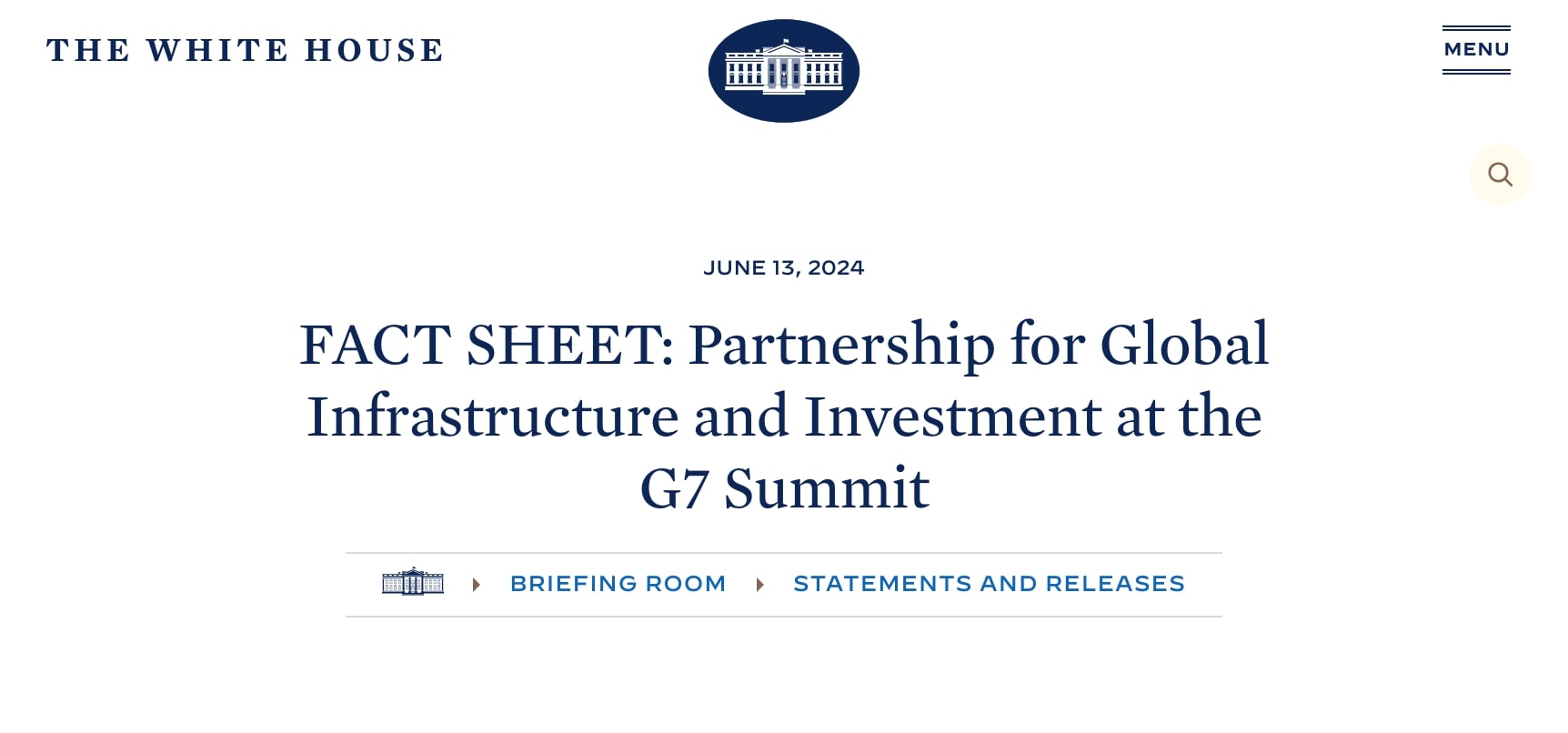At the recent G7 Summit, a significant initiative was announced: the “Partnership for Global Infrastructure and Investment” (PGII). This initiative represents a strategic effort to reshape global infrastructure investment and is seen as a direct counter to China’s extensive Belt and Road Initiative (BRI).
What is the PGII?
The PGII is a collaborative effort by the G7 nations to mobilise substantial financial resources for infrastructure projects in low- and middle-income countries. The initiative emphasises sustainability, transparency, and high standards in investment, aiming to foster economic growth and development in these regions. With commitments potentially amounting to hundreds of billions of dollars, the PGII seeks to offer a viable alternative to the Chinese BRI, which has been a key component of China’s global strategy over the past decade.
Impact on China’s Belt and Road Initiative
China’s BRI has been instrumental in expanding its economic and geopolitical reach through large-scale infrastructure projects across Asia, Africa, and Latin America. However, the initiative has faced criticism for creating debt dependency, lacking transparency, and sometimes delivering subpar project outcomes. The PGII, by offering competitive and transparent financing, addresses these issues, providing recipient countries with an attractive alternative.
1. **Economic Competition**: The PGII introduces robust competition to the BRI. With substantial financial backing from the G7, countries seeking infrastructure development now have an alternative to Chinese investment, which could slow China’s economic expansion in key regions.
2. **Geopolitical Influence**: The PGII signifies a strategic effort by the G7 to strengthen ties with developing nations. This could diminish China’s growing geopolitical influence by creating a counterbalance through Western-led investments, fostering a more multipolar approach to global development.
3. **Standards and Transparency**: Emphasising high standards and transparency, the PGII addresses a critical point of contention with the BRI. This focus on ethical investment practices could sway countries to favour PGII projects over BRI ones, impacting China’s role in international development.
Implications for BRICS
The PGII could also influence the internal dynamics of the BRICS nations (Brazil, Russia, India, China, and South Africa). Countries such as India, which have strategic reservations about China’s dominance, might find the PGII a beneficial counterbalance, potentially altering economic alignments within the group. This could lead to a more diversified economic strategy among BRICS nations, mitigating China’s dominant influence.
Conclusion
The Partnership for Global Infrastructure and Investment is a transformative initiative in global infrastructure development, providing a substantial counterweight to China’s Belt and Road Initiative. By focusing on sustainability, transparency, and high standards, the G7 aims to reshape the landscape of global investment, offering developing countries credible alternatives to Chinese financing. As this initiative unfolds, it will be crucial to observe its impact on global economic and geopolitical dynamics, particularly in relation to China’s strategic ambitions and the BRICS coalition.
For further details, please refer to the [White House fact sheet] on the PGII.














